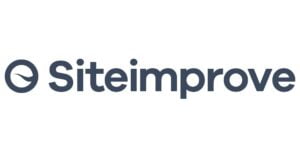Must-Have ADA Compliance Checklist (Updated in 2025)
Web accessibility is your ally—helping you exhibit your social responsibility and promote inclusivity. However, on the other hand, if you ignore it, statistics show that someone will sue you sooner than later.
So, you’d think everyone would be on board by now. But that’s not the case.
With the rapidly changing digital landscape, achieving website accessibility is a tall order. While that’s no reason to ignore an opportunity to better serve people with disabilities—the overwhelm is real.
This guide provides basic information on ADA compliance and what’s required for your website to achieve Level A and Level AA – two of the three levels associated with the Website Content Accessibility Guidelines (WCAG).
For those who would rather turn on easy mode — we also introduce web accessibility software such as UserWay and accessiBe that takes care of most accessibility issues. The companies we recommend also offer complementary manual services. That way, you can keep your website a step ahead of compliance standards.
What is ADA Compliance?
The Americans with Disabilities Act (ADA) is a law that protects differently-abled people and their needs. Employers and business owners must provide reasonable accommodations for differently-abled people to prevent discrimination.
The purpose of the law is to give everyone the same rights and opportunities.
Additionally, it guarantees equal opportunity for individuals with disabilities in federal and state government services, employment, transportation, and telecommunications.
While websites aren’t explicitly included in the ADA, they’re considered places of public accommodation and are thus subject to the law. Various courts around America have enforced this, requiring websites to be ADA compliant.
Because there are no clear guidelines for website ADA compliance, websites adhere to the Web Content Accessibility Guidelines (WCAG) 2.1.
ADA Compliance Checklist 2025
An ADA compliance checklist can be a great reference point to ensure that your website complies with the ADA guidelines.
Below are the latest and updated checklists highlighting all important aspects to help you make your website ADA compliant.
A good way to check for ADA compliance requires breaking your website down from Level A and Level AA. This will also help you ensure that your website is accessible to users with disabilities.
You must also optimize your website for any assistive technology. This is because different assistive technologies use different programming to help people with disabilities navigate the site.

A Fast and Efficient Way to Comply with Web Accessibility Guidelines
Our top-recommended web accessibility solution is accessiBe. This advanced AI-powered tool makes it easier to apply the latest WCAG standards to your site by simply adding a line of code to the back-end.
1. Navigation
One of the most important parts of maintaining website accessibility is ensuring users can navigate your site in many ways. For instance, you have to ensure that users can navigate your website by making it easier to use the keyboard. You should also avoid keyboard traps, where someone could be stuck on a web page using keyboard-only navigation.
- Users should be able to navigate using screen readers and keyboard. Not all website visitors will be using a mouse. Blind or low-vision users use a screen reader to navigate a web page while those with mobility disabilities requires a keyboard to browse online.
- Use skip navigation links. Navigation poses accessibility barriers to users with no or limited arm movement by requiring them to perform numerous actions before reaching the content.
- Proper labeling and logical naming on links and buttons. Clear and descriptive labels allow users to navigate more efficiently using screen readers and keyboard navigation tools.
- Page language should be identifiable in code: By ensuring that the language of each page on your website is identifiable in code, assistive technologies can render text more accurately.
- Bad form input should notify users. Notifications have to be concise and clear. In particular, error messages should be easy to understand and provide simple instructions on how they can be resolved. Success messages are also important to confirm task completion.
- Forms should be labeled properly and have legends: For all website content to be understandable and perceivable to all visitors, it’s important to label elements such as forms.
2. Headings and Titles
- Headings and titles must be readable and have a hierarchy. According to web accessibility principles, your website needs to be understandable. Organizing your content under the right headings and titles ensures this. This allows users to easily navigate your content using just a keyboard.
- No empty links or heading tags. A heading tag without content is confusing for screen readers and prevents easy access for those who use a keyboard to navigate your site. Ensure that all heading tags are useful for navigation.
3. Language and Text
To achieve ADA compliance, you must ensure that your website uses a language that accessibility software can easily identify.
The language your website uses should also depend on where your website is based. For instance, a website for a US-based company should have English, while the language for a France-based website should be French.
- Text captions for videos. Videos and audio should have a transcript or audio description. If your website has audio and video files, adding transcripts and/or descriptions is important to ensure users with hearing impairments can still interact with your content. Also, ensure that transcripts are available in the same languages as the audio content on your site.
- Avoid shortcuts that screen readers may confuse: For example, replace ‘b’ and ‘i’ HTML tags with ‘strong’ and ‘em’
4. Media and Colour
Another crucial element to attaining ADA compliance is the website accessibility of your content. Content like photos and videos require special accommodations so users can easily access them.
- Text captions for videos. Website visitors with hearing impairments still want to be able to engage with your video content, which is why text captions are a must.
- Use of alt text for non-text content. Not every website visitor will be able to see non-text content such as images. Adding alternative text to elements such as images ensures screen readers can provide a website visitor with more context.
- Time limit functions. Designing functions that are not time-dependent helps people with disabilities complete these functions. Providing options to disable time limits, customize the length of time limits, or request more time before a time limit occurs helps those who require more time to complete tasks.
- Audio should not use autoplay and can be stopped by the user
- No strobing and flashing lights. Seizures are identified as a disability, which means any strobing or flashing visuals on your website could negatively impact certain visitors.
- Website visitors should be able to stop automatic scrolling and blinking content: OCD and ADHD are deemed cognitive disabilities, so website owners must give users the option to stop blinking content and automatic scrolling.
5. Design and Aesthetics
When it comes to ADA compliance, you must ensure that your web design is aesthetically pleasing. Not only that but your website should be designed to be accessible to all users.
There are many ways to improve your website design. However, the most common way to do this is to ensure that your website is simple, consistent, and easy to navigate.
- There should be no major validation errors on the website design. Validation errors can cause difficulties for disabled users to navigate through the content. Due diligence should ensure these errors occur as infrequently as possible.
- Elements in focus should remain unchanged on website content: Many of your website visitors will need to zoom in on content to see it more clearly. When this occurs, your content and media mustn’t become distorted.
That may seem like a lot to take in.
Many businesses are using accessibility software to scan their websites for compliance issues. From there, they can decide to hand off the heavy lifting to a third-party accessibility service provider.
Level AA Compliance
Level AA requirements refine your website’s accessibility standards even further. It takes a little extra effort to implement and bumps you to an advanced accessibility standard qualification. The requirements include:
- Video and audio content must have text captions
- Websites should keep the color contrast ratio at a level for visually impaired users
- Underlined text should lead to a link
- Users should be able to resize text to 200% without changing the form
- Websites should not use images where text has the same effect
- Redundant links should be removed
- Language should be identifiable in code even with language changes
- Users must receive suggestions on how to solve input errors
- The contrast ratio for page backgrounds and text should be at least 4.5 to 1
- Pages should be accessible in several ways
- Proper role must be defined for each interactive elements.
- Reading order should match with presentation order ie. from top to bottom and from left to right.
- Multiple ways of navigation must be provided.
- No information should be conveyed in the form of symbols.
- No information should be conveyed through color.
- Pause, stop and hide mechanism should be provided for moving content such as carousels.
- Expanded/ collapsed or selected state of element such as accordions, buttons, combo boxes should be defined.
- Descriptive and unique page titles should be provided for all pages in the application.
- Visual label matches with the accessible or programmatic name for the elements.
- Application does not have any feature / functionality, which triggers automatically on receiving the focus.
- Change of context does not happen anywhere in the application when changing the setting of any UI component.
- A tooltip should be provided for icons.
- Tab focus indicator must be visible on each and every interactive elements.
- Repeated components are occurring in the same order on every page of the application, which helps the screen reader and cognitive user to predict the location of different web elements on each page.
- Elements that have the same functionality across multiple pages in the application have same labels or same name.
Plugins and Widgets
Aside from the Level A and AA checklists, plugins and widgets can greatly enhance the accessibility and efficiency of your website. Some plugins take care of most accessibility issues for you and keep your website up to date. Some complementary manual services are usually needed. Widgets add features that further help visitors access your site.
|
|
|
 |
|
| Existing Customers |
    |
    |
   |
| Technology | Fully automated web accessibility solution | Fully automated web accessibility solution | Manual web accessibility solution and automated browser extension and plugin |
| Compliant in Countries |
|
|
|
| Compliance | WCAG | ADA | AODA | Section 508 | EAA | WCAG | ADA | AODA | Section 508 | EAA | WCAG | ADA | Section 508 | EAA |
| Prices |
Starts at From $49 |
Starts at From $49 |
Starts at Custom Quotation Required |
| Partner Program (for Web Agencies) |
|
|
|
| Customer support | Email only | Email only | Email & Phone Support |
| Free Demo |
Yes Free demo available |
Yes Free demo available |
Yes Free demo available |
| Free Trial |
No credit card needed 7-day free trial |
Credit card required 7-day free trial |
No Free website accessibility audit available |
Importance of Referring to the Latest Checklist
The checklists above help you determine what changes to make on your website to achieve ADA compliance. Additionally, here’s why you should look for the 2025 checklist.
When differently-abled people highlight new challenges and hindrances to accessibility, authorities and lawmakers update laws and guidelines. With our increasing need for the internet, these challenges constantly change.
That said, it is necessary to have an updated and latest checklist. This way, you can ensure that your website complies with the latest regulations.
An updated checklist also helps you provide differently-abled users with the best experience (1) possible.
Wrapping Up
Making your website accessible is a continuous and ongoing process. New checklists constantly appear over the years, and businesses must follow them to comply with the law.
While it can be fast-paced, these checklists help keep you on track with website accessibility. However, checklists are not the end-all-be-all of ADA compliance.
Another step you have to remember is to take the time to audit your website to check for compliance.
Take all the necessary actions to make your website ADA compliant to avoid any issues. Begin by conducting an audit of your website at Accessibility Checker
Liked this post? Learn more about ADA compliance below:
What is ADA response to website slideshows?
Website slideshows need to meet ADA requirements because they’re a part of your site. To ensure a slideshow is accessible, you would take steps such as avoiding excess animation, adding ALT text to graphics, using screen reader-compatible templates, and paying attention to color contrast.
How to code a website to be ADA compliant?
Suppose you are coding a website from scratch and want to make it accessible. In that case, you need to focus on aspects such as adding ALT text, creating a consistent and organized layout, adding text transcripts for audio and video files, and providing suggestions in the event of input errors. Automatic tools are available to scan your site once it’s complete, ensuring you don’t miss any accessibility issues.
What are the sanctions for ADA compliance on websites?
Websites that are not ADA compliant can attract a penalty of up to $75,000. Any issues that are identified thereafter can result in fines of up to $150,000. And if an ADA lawsuit goes to court, expect the overall cost to be much more.
What is ADA compliant for a restaurant website?
A restaurant website must meet the same ADA requirements as any other consumer site. This means all elements on your site need to meet WCAG criteria, and assistive technologies should be used to ensure that anyone with a visual or hearing impairment or cognitive or physical disability can still access all parts of your site.
It is important to follow ADA guidelines when designing your website?
ADA-related lawsuits are on the rise across the globe. Paying attention to ADA requirements while designing your site not only protects your brand and bottom line but it helps you reach a much wider audience overall.




